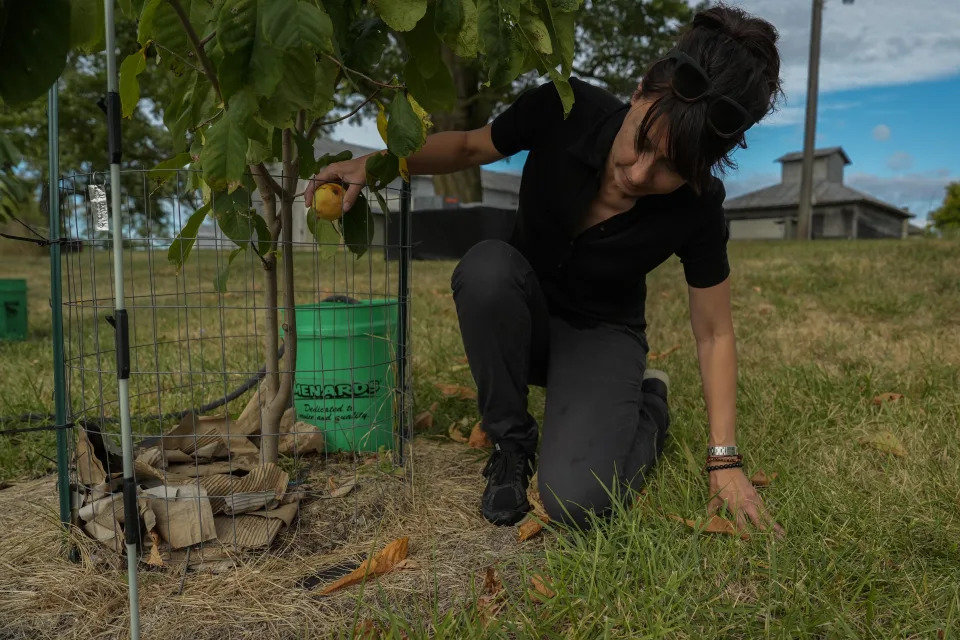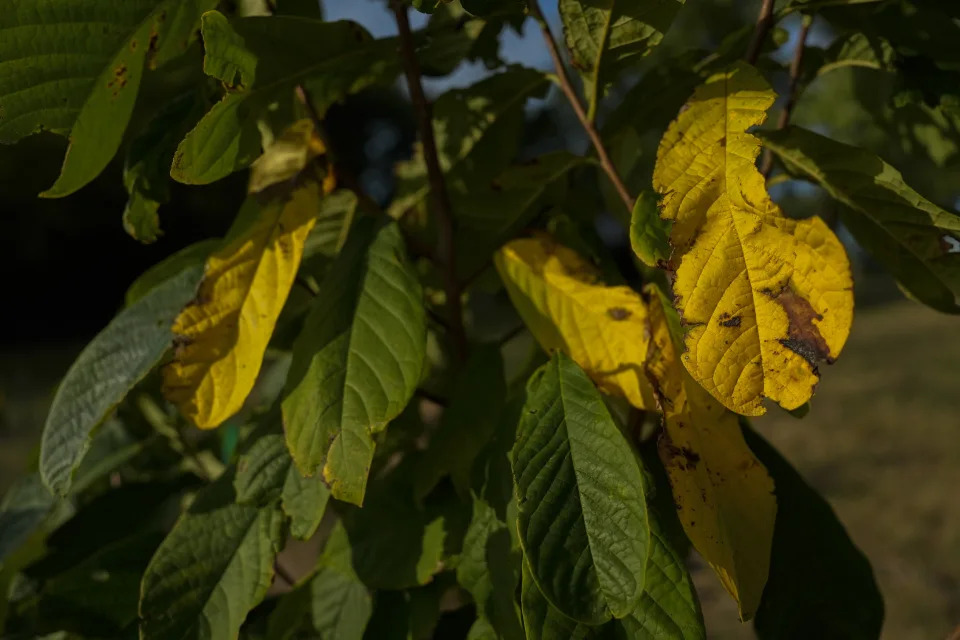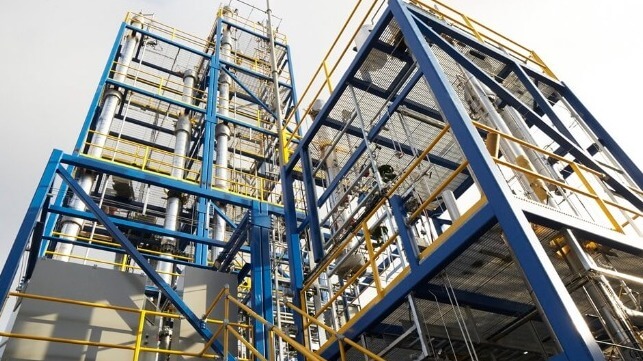By Beth Miller
To minimize the impact of man-made climate change, it is essential to significantly and rapidly decrease carbon dioxide emissions while simultaneously meeting the energy and manufacturing needs of a healthy and economically stable society. A powerhouse collaboration of universities and industry, led by the McKelvey School of Engineering at Washington University in St. Louis, is embarking on a bold plan to transform manufacturing toward zero or negative emissions by converting carbon dioxide ultimately into environmentally friendly chemicals and products that create a circular economy.
The Carbon Utilization Redesign for Biomanufacturing-Empowered Decarbonization (CURB) Engineering Research Center (ERC) is funded by a five-year, $26 million grant from the U.S. National Science Foundation (NSF). The award — one of only four the NSF awarded nationwide in 2024 — supports convergent projects that include research, education, commercialization, workforce development, and diversity and inclusion that will lead to societal change.
“The vision of CURB is as a vibrant global research and innovation ecosystem that transforms U.S. manufacturing by capturing and leveraging carbon dioxide emissions and thereby decreasing the human ecological footprint,” said Aaron F. Bobick, dean and the James M. McKelvey Professor in McKelvey Engineering. “For McKelvey Engineering to lead this research project represents the increased sophistication of the school’s research and its ability to support an activity of this scale and in alignment with our strategic priorities.”
McKelvey Engineering brings its broad, unique experience with the nation’s first Department of Energy, Environmental & Chemical Engineering to lead the ambitious project in collaboration with prominent researchers at the University of Delaware, Prairie View A&M University and Texas A&M University.
‘’This is not just another grant — this center has the opportunity to transform the U.S. economy,” said Joshua Yuan, chair of the Department of Energy, Environmental & Chemical Engineering in McKelvey Engineering, the Lucy & Stanley Lopata Professor and director of CURB. “Because of low photosynthesis efficiency, there is no way that the current bioprocesses can replace all petrochemical products using limited land and natural resources. CURB will create highly efficient chem-bio hybrid systems to convert renewable energy and carbon dioxide into chemicals, fuels and materials. This will decarbonize U.S. manufacturing and replace a substantial amount of petrochemical products. CURB will drive a new circular carbon economy to fulfill the needs of human society while mitigating carbon emission. That is what is at stake with this center.”
Yuan leads the center with co-principal investigators Feng Jiao, professor of energy, environmental & chemical engineering, and Marcus Foston, associate professor of energy, environmental & chemical engineering, both at WashU; Susie Dai, associate professor of plant pathology and microbiology at Texas A&M University; and Irvin W. Osborne-Lee, professor of chemical engineering at Prairie View A&M. They are joined by 10 tenured faculty members and two senior lecturers from McKelvey Engineering, as well as 30 faculty members at seven universities; more than 30 corporate, innovation and education partners; and extensive administrative support. Twenty-one companies have committed as member organizations for the project. Among them are Brewer Science Inc.; JERA Americas Inc.; MilliporeSigma; Nestle Purina; Peabody; Skytree B.V.; Spire; and Southwest Airlines.
Among CURB’s strategic goals include advancing scientific discoveries to create new hybrid engineering systems creating pilot-scale testbed facilities; demonstrating the economics and publishing the research results; filing for patents; and developing new educational programs for middle and high school students and undergraduate and graduate students, among others. By the end of the first five years, they expect to have expanded the member network, hosted multiple showcase events, created more than 20 internships with industry partners and launched startup companies based on the research to transform U.S. manufacturing.
“I’m thrilled that the McKelvey School of Engineering was chosen to lead this ambitious decarbonization initiative,” said Chancellor Andrew D. Martin. “This endeavor represents a significant investment in research and innovation, showcasing the advanced capabilities of our institution and aligning with our core mission. We look forward to collaborating with our partners to generate new opportunities and make a lasting positive impact.”
“This funding, and the work that will result, demonstrates WashU's strategic vision in which societal challenges are solved through the strengths of our region and our university,” said Beverly Wendland, WashU provost and executive vice chancellor for academic affairs. “Collaboration that convenes disciplines, universities and industries will bring about world-class research that leads to real-world solutions, and I am incredibly proud our McKelvey colleagues are leading this effort. This is a powerful signal for the future of research on our Danforth Campus and the impact WashU and St. Louis can make together.”
The research
CURB will use a Hybrid Electro-Bio CO2 Utilization System (HEBCUS) that uses electrocatalysis to turn waste carbon dioxide into intermediate substances, such as ethanol, acetate and propionate. These intermediates will be compatible with biomanufacturing systems that can more efficiently convert them into a range of products, such as platform chemicals, biofertilizers and other environmentally responsible materials.
The team will design and optimize two types of HEBCUS: one that uses microbial cells to convert carbon dioxide and one that uses enzymes. The system will be 10 times more efficient than natural processes, such as photosynthesis, and requires fewer steps. CURB will drive new research areas that connect with HEBCUS systems, including integrating renewable energy sources, energy storage applications and biomanufacturing of diverse products.
“Soluble multi-carbon intermediates produced with HEBCUS present a unique advantage over methanol, formate, hydrogen and carbon monoxide-based platforms, enabling substantially improved mass, energy and electron transfers that overcome the gas-to-liquid transfer challenges of hydrogen and carbon monoxide, compatibility with many microbes for efficient conversion into a broad range of products with fewer steps, and the design of multi-enzyme cell-free systems for chemical and polymer synthesis with fewer steps,” Jiao said.
Researchers will then take the new materials and test them for life cycle emissions, supply chain design, market for new products, and environmental justice impact, among other things to identify potential barriers to commercialization and ways to improve the societal, environmental, economic and ecological impacts.
“The goal is to make this process so effective that it is as cost effective to make your materials out of the carbon dioxide you pull out of the air as it would be to pull oil out of the ground, because then it’s economically viable,” Bobick said. “Nothing will change until we achieve that, because there is unlikely to be a policy approach that provides a sustainable way out of global warming or climate change. You have to make it economically viable.”
Workforce development
The new technology designed and implemented through CURB is expected to create new jobs that will create new opportunities for people in the community. In addition to jobs, CURB will create new career and training pathways for upskilling, a workforce transition into sectors that are difficult to decarbonize, such as chemical production, through biomanufacturing. This transition aims to enhance U.S. workers’ ability to support themselves and their families while contributing to sustainability of U.S. manufacturing.
“As part of this ERC, we are focused on the workforce development that goes along with a new industry that relies on a new pathway for carbon,” Foston said. “The United States has a strong foundation in biomanufacturing for pharmaceuticals and vaccines. CURB seeks to broaden this expertise to encompass chemicals and materials, thereby driving a comprehensive shift toward biomanufacturing. This initiative begins with education and outreach, establishing a pipeline as early as K-12 schools to cultivate the next generation of engineers and skilled workers in these emerging fields.”
“Building an inclusive innovation system that brings technologies to market that solve broad societal challenges through the bioeconomy is core to the mission of BioSTL,” said Justin Raymundo, vice president of innovation ecosystem-building for BioSTL, the backbone organization for the bioscience innovation ecosystem in St. Louis and CURB innovation partner. “These types of efforts, such as CURB, are exactly what we want to see. It represents continued investment in St. Louis and our innovation economy. We’re excited to contribute significantly to CURB’s leadership in U.S. manufacturing every step of the way and collaborate across community engagement, workforce development, and innovation ecosystem efforts — from idea to growth stage — to create opportunities, jobs and have a huge societal impact into the circular economy.”
NSF Engineering Research Center (ERC)
Since the program began in 1985, NSF has funded 75 ERCs throughout the United States. With up to 10 years of support for each center, this investment has led to more than 240 spinoff companies; more than 900 patents; more than 14,400 total bachelor’s, master’s and doctoral degrees to ERC students; and numerous research outcomes enabling new technologies.
"NSF's Engineering Research Centers ask big questions in order to catalyze solutions with far-reaching impacts," said NSF Director Sethuraman Panchanathan. "NSF Engineering Research Centers are powerhouses of discovery and innovation, bringing America's great engineering minds to bear on our toughest challenges. By collaborating with industry and training the workforce of the future, ERCs create an innovation ecosystem that can accelerate engineering innovations, producing tremendous economic and societal benefits for the nation."
###
The McKelvey School of Engineering at Washington University in St. Louis promotes independent inquiry and education with an emphasis on scientific excellence, innovation and collaboration without boundaries. McKelvey Engineering has top-ranked research and graduate programs across departments, particularly in biomedical engineering, environmental engineering and computing, and has one of the most selective undergraduate programs in the country. With 165 full-time faculty, 1,420 undergraduate students, 1,616 graduate students and 21,000 living alumni, we are working to solve some of society’s greatest challenges; to prepare students to become leaders and innovate throughout their careers; and to be a catalyst of economic development for the St. Louis region and beyond










